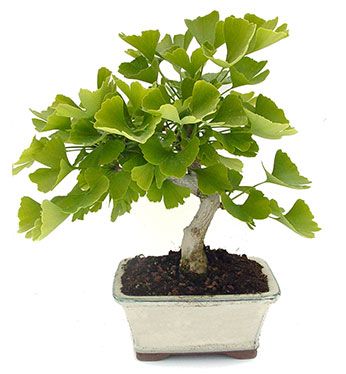Characteristics
Deciduous tree. The leaves are in the shape of a fan and are valued because of their yellow colour.
Location
Outside, in the sun during the whole year. Protect against frost.
Watering
Abundant in summer and moderate in winter.
Fertilization
Spring and autumn.
Re-potting
Every 2 years at the beginning of spring.
Substrate
100% Akadama, or a mixture of Akadama with a 20% of volcanic earth.
Pruning and pinching
Pruning
At the beginning of spring.
Pinching
When the branch has developed 6 to 8 leaves trim new shoots to two or three leaves leaving topmost leaves on outside.
Wiring
Not usual but if you do wire it, preferably at the beginning of spring.
Curiosities
The Ginkgo is a very primitive tree. Its origins are in the Mesozoic as fossils demonstrate. The survival of this species is due to the Buddhist monks who planted Ginkgos around their monasteries in the belief that they protect against fires, considering them sacred trees. Ginkgos are dioic trees which means that there are female and male trees. The female ones produce a false fruit because it’s an ovule which, if there is no male tree nearby, remains unfertilized. In street plantations the male ones are preferred because the ovules that fall to the ground ferment and produce a nauseating odour. The edible seed, uncooked or toasted, has a similar flavour as the chestnut.

